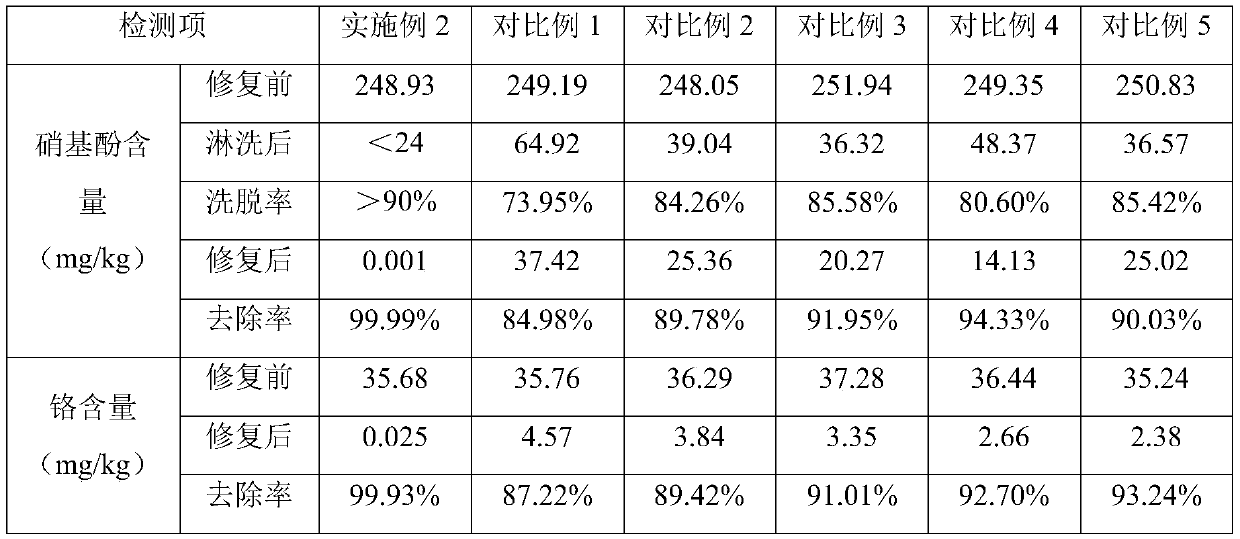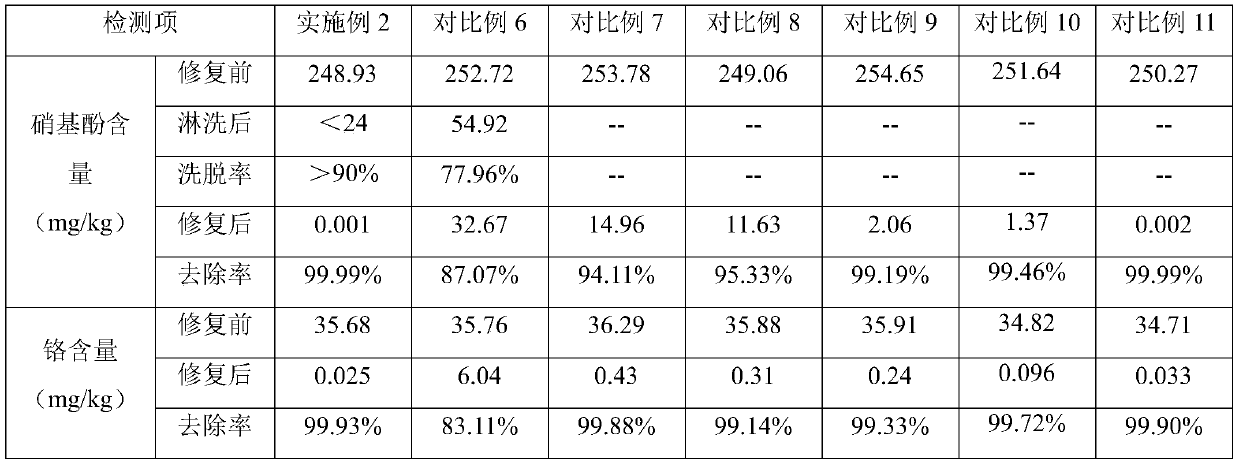Method for removing persistent organic pollutants in soil
A technology of organic pollutants and persistence, applied in the field of soil pollution remediation, can solve the problems of difficult disposal of leaching waste liquid, long time required, and large consumption of eluent, so as to reduce the cost of soil remediation and the number of repeated uses Multiple, good economic benefits
- Summary
- Abstract
- Description
- Claims
- Application Information
AI Technical Summary
Problems solved by technology
Method used
Image
Examples
Embodiment 1
[0034] According to the method for removing persistent organic pollutants in soil provided by the invention, polycyclic aromatic hydrocarbon pyrene-contaminated soil is repaired. Specific steps are as follows:
[0035] Step 1. Soil pretreatment: remove the impurities in the pyrene-contaminated soil, air-dry them naturally, crush and sieve them, and take 6 mixed samples from multiple points for soil monitoring and analysis. The organic matter content of the pyrene-contaminated soil is 0.19%, while the mineral composition is 100%. Kaolin, the average value of various monitoring indicators: pH 6.1, total salt content 0.43%, pyrene 406.74mg / kg, other organic pollutants and heavy metal content did not exceed the standard, and the mass ratio of 200:1 with the soil dispersant was mixed evenly. The soil dispersant is formed by mixing arsenic sandstone, opal light shale and carbon nanotubes in a mass ratio of 10:5:1;
[0036] Step 2, soil continuous leaching: pre-prepared biological-a...
Embodiment 2
[0044] According to the method for removing persistent organic pollutants in soil provided by the invention, the compound polluted soil of nitrophenol and chromium is repaired. Specific steps are as follows:
[0045] Step 1, soil pretreatment: remove the sundries in the nitrophenol and chromium compound polluted soil, air-dry naturally, pulverize and sieve, and carry out soil monitoring and analysis in 6 parts of multi-point mixed sampling. The organic matter content of the pesticide polluted soil is 0.22%, while The mineral composition is 91% kaolin, 9% others, the average value of various monitoring indicators: pH 6.3, total salt content 0.21%, nitrophenol 248.93mg / kg, chromium 35.68mg / kg, and the mass ratio of 200% with soil dispersant : 3 mix evenly, and described soil dispersant is mixed by arsenic sandstone, opal light shale and carbon nanotube by mass proportioning as 10:5:1;
[0046] Step 2, soil continuous leaching: pre-prepared 15% mass fraction of hydroxypropyl-β-c...
Embodiment 3
[0054] According to the method for removing persistent organic pollutants in soil provided by the invention, the soil polluted by dioctyl phthalate and various heavy metals is repaired. Specific steps are as follows:
[0055] Step 1. Soil pretreatment: Remove the impurities in the dioctyl phthalate-contaminated soil, air-dry naturally, crush and sieve, and take 6 samples of multi-point mixed samples for soil monitoring and analysis. The organic matter content of the pesticide-contaminated soil is 0.24%. The mineral composition is 90% montmorillonite, 10% kaolin, the average value of various monitoring indicators: pH 6.7, total salt content 0.34%, dioctyl phthalate 603.5mg / kg, Hg 4.6mg / kg, Cu 53.8 mg / kg, Pb 71.4mg / kg, Cd 0.29mg / kg, Cr4.32mg / kg, As 39.3mg / kg, mixed evenly with the soil dispersant in a mass ratio of 200:2, and the soil dispersant is made of arsenic sandstone , opal light shale and carbon nanotubes are mixed at a mass ratio of 10:5:1;
[0056] Step 2, soil conti...
PUM
 Login to View More
Login to View More Abstract
Description
Claims
Application Information
 Login to View More
Login to View More - R&D
- Intellectual Property
- Life Sciences
- Materials
- Tech Scout
- Unparalleled Data Quality
- Higher Quality Content
- 60% Fewer Hallucinations
Browse by: Latest US Patents, China's latest patents, Technical Efficacy Thesaurus, Application Domain, Technology Topic, Popular Technical Reports.
© 2025 PatSnap. All rights reserved.Legal|Privacy policy|Modern Slavery Act Transparency Statement|Sitemap|About US| Contact US: help@patsnap.com


